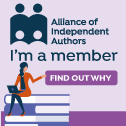 No, I haven’t killed off my second book. My self-edits are over and the typescript has gone to a beta reader. So what did the process involve?
No, I haven’t killed off my second book. My self-edits are over and the typescript has gone to a beta reader. So what did the process involve?
First of all, I check my event grid. This is my table of contents, a brief summary of events in each chapter; who says what to whom, what is discovered, what is hidden, the next problem, the bad news, action taken.
Sometimes when writing a scene in a sub-plot or sub-sub-plot, I forget if one person knows what another is up to, how long it takes to get from A to B or if someone’s had enough time to heal from a gunshot wound. It helps to prevent snowstorms in summer and eleven month pregnancies.
Next, I sit around looking enigmatic. What I’m really doing is thinking, especially about each character’s time line. Does each person’s story hang together logically? Of course, it’s the main character’s story, but each of the secondary characters needs to have a logical progression. I write my protagonist in the first person, so I play a game of writing from each of the secondaries’ point of view in the first person. It’s good fun as well!
Then I whip out the red pen and hunt out padding and fluff line-by-line. (I typed fliff instead of fluff at first and changed it back, but fliff describes it so much better). This is where I try to remember all those mini-maxims I’ve learnt over the past 18 months.
But “rules” is not always rules.
SDT (Show dont’t tell), i.e. standing in the room with the character as the action as it happens. Sometimes, to compress a load of boring stuff or time between events, telling is the most compact way, but not to describe the crisis point in the story.
LIM (Less is more), but not to the extent of making the writing cold and sterile. I test out deletions by cutting (Ctrl C) rather than deleting the word/phrase/sentence. Easy to put back if the narrative or dialogue really, really doesn’t work without the cut text.
RUE (Resist the urge to explain), also known as The reader WILL get it. This is so difficult, but readers are pretty intelligent and will get irritated if you harp on about the obvious or say the same thing twice in different words to make sure you’ve got the point across. Basic guideline – don’t do it.
Kill adverbs. Well, not every one, but check you are not overdoing them and scrutinise their function in each sentence. Delete rather, quite, very and so by default and make them earn their place back.
Star-chamber all adjectives (That expression’s mine – more on the real Star Chamber here). Unless it’s necessary to the plot, does it matter what colour a car is? You need adjectives to describe your characters, but keep them to an absolute minimum. Readers like to imagine the details themselves.
Replace felt, was, had, thought, wonder and suddenly where you can, but don’t have hysterics if you need to use them in their proper place.
Use strong verbs: trudge, stride, shuffle, totter, march, saunter instead of walk.
And lastly, get the throat sweets ready, clear your schedule and read the whole blessed thing aloud in one go.
I love this stage where I can bring dull bits to life, extend tension to an unbearable point, cut the crap and polish each word to ultimate beauty.
How do you see edits?













That’s been really helpful. Thank you for that blog post! : )
Thanks, Angela. I’ve learned a lot in the past 20 months and am very happy to pass on any tips.
Obviously, I’m not a professional editor(!), but the steps above are ones any writer can take before submitting. It shows you are aware, you take your work seriously and have a professional attitude.
Good luck with your own writing!
Thanks for this – it’s always interesting to see how other people approach editing. I’ve got to the point where I no longer count the number of drafts – I just go over and over it, concentrating on one thing at a time. Get there eventually.
And then someone reads it and I have to do it all over again!
So true, Jo, about finishing edits, then somebody else reads it and you have to do it all over again.
You have to pick your beta readers with extreme care; I swap with mine. But I don’t always follow every tiny recommendation. We need to have confidence in ourselves and our story.
Great post on Editing, Alison. I love your thorough approach, and well done on getting to the end of it! Fingers crossed for your novel!
Claire x
Thanks, Claire – I always value your comments.
My first book is out on submission now, so I have this one ready for the two-book deal! I’m about half-way through drafting the third and I see I’m writing so much better than when I started the first one. I’m sure this editing process has honed up my writing sensitivity as well as any ability I may have.
Practice does make perfect!